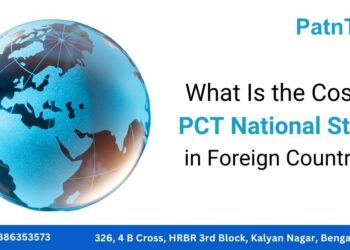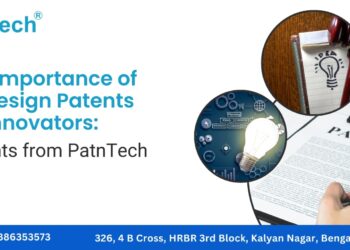Latest Trademark Cases
- June 10, 2021
- Posted by: Patntech
- Categories: Blog, Trademark


A trademark suit can be initiated at times when the original proprietor/owner of the trademark finds his mark to be infringed or used without permissions. The suit can be filed under a broad classification of two circumstances. One is the infringement on the registered trademarks under the Trademark Registry. The other is through the action of passing off, in this case, the mark need not be registered but is eligible for protection by the law from misuse.
To establish the ownership of the trademark, the plaintiff has the onus to substantiate additional documents which prove that he is the first user of the mark and the only owner of the mark. The law states that “the proprietor of a registered trademark or a registered user cannot interfere with the use of any identical or similar mark if the person has been using the mark from an earlier date”. This is called the “Prior user claim” for the protection of the trademark from infringement.
The requirement of prior user claim includes the use of the mark, the user must be in a continuous state of usage with the trademark, the trademark should be used by the proprietor for claiming the protection and lastly the mark should have been used from a date prior to the use of the registered trademark or the date of registration whichever is earlier.
It is also a well-settled law of trademark that, prior use of the goods will override the subsequent user, even though the subsequent user has registered trademark. We can see time and again the law is proved in the case of Manohar Singh vs. Vimal Sehnaaz, the Madras High Court granted an order of interim injunction in favour of the plaintiff for the continuous usage of trade ‘BANSURI’. It held that the plaintiff had made a prima facie case and it was strengthened by their registration.
It is not sufficient that the plaintiff considers themselves as a prior user of the trademark, the court requires sufficient evidence along. In the case R. Industries Pvt Ltd vs. Mohan Meakin Ltd., the plaintiff could not satisfy the essential ingredients of a prima facie case establishing that it were the prior users of the impugned mark or that defendant’s use of the mark would cause irreparable injury. Therefore, the court dismissed the plaintiff’s application to grant for an ad-interim injunction.
It can be seen that, primarily when the suit is setting up to court, the plaintiff can do the best to protect his trademark is by establishing a strong prima facie case in favour of himself. In, Glaxo Group Ltd vs. Zuche Pharmaceuticals Pvt Ltd., the Delhi High Court granted an ex-parte ad interim injunction upon being satisfied by the plaintiff’s prima facie case and defendants were forbidden from offering pharmaceutical or cosmetic items containing the ingredients Betamethasone Valerate and Neomycin that were packaged in a similar manner to the plaintiff’s packaging and infringed on the plaintiff’s trademark BETNOVATE.
Another case, Zenith Dance Institute Pvt Ltd vs. Zenith Dancing & Music., the court granted ex-parte ad interim injunction upon being satisfied that plaintiff had a prima facie case the restrained the defendant from infringing the plaintiff’s mark ‘ZENITH’ by using it in conjunction with their goods and services.
Similarly, in the case Gem Edible Oil Private Limited vs. Carrying On Business At, the Madras High Court decreed the suit ex-parte in favour of the plaintiff for making out the strong case and grant of injunction protecting the trademark ‘GEM’S GOLD’.
The emphasis over the strong case base is required as the sturdier the evidence are the higher the chances of protecting the trademark. The case, Britannia Industries Ltd vs. ITC Ltd & Ors, the Delhi High Court denied an injunction due to the packaging of the defendant and that of the plaintiff. The plaintiff had insufficient points of similarity to render that the package of the defendant’s confusing or deceptively similar to that of the plaintiff.
The main contention under trademark suits is the points of similarity or the deception caused by one party to that of the others. However, each case is decided upon its own merits after considering the whole of the case. When the suit is filed for the likelihood of confusion, the plaintiff must accompany the case with relevant evidence and the future irreparable loss that it will face if not protected now.
In the case, M/S Guaurav Polymers vs. M/S Delight Chemicals Private, the plaintiff had been carrying on the business of manufacture of white limewash in the country and distributing and selling the same under the flagship brand name Surya and the device mark of “Rising Sun”. The Andhra High Court upheld the injunction granted by the trial court in the circumstance of the likelihood of confusion between the marks of plaintiff and the defendant ‘Rising Sun’ and ‘Surya Magical White’ respectively.
The confusion and deception were once again recently cleared in the case by Delhi High Court in Kbm Foods Pvt Ltd vs. Sachin Gupta, an interim injunction was issued against defendant for using Gai Chaap, the device of COW device mark and other features of the label and trade dress of the plaintiff either in isolation or in conjunction with each other which was resulting in causing confusion or deception. Even the balance of convenience is in favour of the plaintiff and irreparable loss shall be caused if the interim order was prayed for is not granted.
While the marks are compared for the differences and similarities it should be noted that under the Trademark law the mark should be looked at as a whole rather than splitting it. In 2014, M/s South India Beverages Pvt. Ltd. vs. General Mills Marketing Inc. & Anr, it was held that “The anti – dissection rule mandates that the Courts whilst dealing with cases of trademark infringement involving composite marks must consider the composite marks in their entirety as an indivisible whole rather than truncating or dissecting them into its component parts and make comparison with the corresponding parts of a rival mark to determine the likelihood of confusion”.
Therefore, the protection is granted to the mark as a whole. In the case at Bombay High Court Sky Enterprise Private ltd vs. Abaad Masala and Co. it was held that the defendant could not use the exact combination of words that plaintiff is registered with “White Chinese Pepper Masala” and “Black Chinese Pepper Masala” in the particular order. However, the same individual words can be used in different combination to describe the pepper masala by any trader.
It was seen in the case, Himalaya Drugs Company & Ors vs. Ashok Kumar & Ors, the Delhi High Court passed an ad-interim injunction restraining the defendants and its associates from using the impugned trade ‘HIMALAYA’ or any other identical with and/or deceptively similar word/mark/label/device to the plaintiff’s trademark in relation to their impugned goods. It was also held that it did appear that the defendants illegally sought to capitalize the goodwill of the plaintiffs and without any due authorization, are earning huge amounts from the public, representing themselves as authorised franchisee agents of the plaintiffs and distributors of the plaintiffs’ products.
Under the usage of similar trademarks, one has to see through that the trademark, even if it doesn’t sound similar, the meaning and its impact over the nominal consumers shouldn’t cause any confusion.
In the case, Imagine Marketing Pvt Ltd vs. Exotic Mile., the Court granted an interim injunction restraining Defendant from passing off the Plaintiff’s mark “BOAT” by using a deceptively similar mark “BOULT” in respect of electronic gadgets and tagline ‘UNPLUG YOURSELF’ which is deceptively similar to the plaintiff’s tagline “PLUG INTO NIRVANA” in their goods and/or services till the disposal of the present suit. The Court found that the defendant’s mark ‘BOULT’ is phonetically identical to the plaintiff’s mark ‘BOAT/boAt,’ and that this would cause customer confusion if they bought from the same platforms since the first two and last alphabets in the mark are similar.
Lacoste S.A vs. Suresh Kumar Sharma, is another case wherein Lacoste, a French clothing brand, had filed a permanent injunction against the defendant for infringing the trademark and passing off. The court found that the defendant had been using the trademark ‘Lacoste’ and further held that the actions led to undue enrichment and created confusion amongst the general public.
The trademark infringement threats are high for the popular brands as the affordability of such branded clothes by several sections of people in the society is relatively low and thus results in counterfeit goods with identical trade names. One such recent case is, Puma Se vs. Mr. Vikas Jindal, Puma are a well-known sports footwear brand, filed an application for permanent injunction against Vikas Jindal, a Ludhiana based business proprietor, for using its trademark ‘PUMA’ and the ‘PUMA’ logo. The plaintiff contended that the defendant was liable for misrepresenting and deriving unfair advantage by using the trade. The court ordered the defendant to pay nominal damages of Rupees 50,000 for selling products using the ‘PUMA’ trademark.
Another infringement case against a popular brand in India is, Bajaj Electricals Limited vs. Gourav Bajaj & Anr, Bajaj Electricals, filed an application at the Bombay High Court for an interim injunction against the defendant, an individual who operates two retail electrical appliance stores at Abohar, Punjab. Gourav Bajaj was operating his stores under the trade names ‘Apna Bajaj Store’ & ‘Bajaj Excellent’. The defendant is also said to operate a website under the impugned domain www.apnabajajstore.com. Bajaj Electricals in this suit contended that the mark ‘BAJAJ’ has been declared as a well-known trademark by the Bombay High Court in 1987. Even after several notices were sent, the defendant failed to appear to the court, therefore the court passed an interim injunction against the defendant from using the trademarks and the domain name.
The trademark classes under which the goods or services are traded is not an exception to use the popular trademarks though the goods/services fall into two different class, which will lead to cause confusion or deception to the customers. The case of International Society for Krishna Consciousness (Iskcon) Vs. IskconApparel Pvt. Ltd. and Anr, is the right precedent for such circumstances. The defendant was a manufacturer of a clothing brand and was trading to sell clothes online under the name ‘ISKCON’. The name ‘ISKCON’ is a well-known trademark coined by the plaintiff and the court observed that the mark exclusively associated with the plaintiff, thereby making it clear that it receives the highest degree of protection. The Court granted an ad-interim injunction, barring the apparel company from using the trade name ISKCON.
As can be seen from the concept of “Infringement,” there will be a case of infringement if the trademark is similar or where trademarks are identical, causing the consumer to believe that the products he is purchasing under the infringing trademark are the same goods manufactured or sold by the owner of the original trademark.
In instances where the trademarks are not identical but are similar, the infringement test is the same as in a passing-off action, that is, the test of the probability of misunderstanding or fraud resulting from similarity of marks is the same in both infringements and passing off actions.
– Author: Sneha V Kopparad
AIPPI World Congress, Yokohama, Japan
We are pleased to share that PatnTech’s Managing Partner, Mr. Chandrasekhar Raju, attended the AIPPI World Congress held in Yokohama, Japan, from September 13–16, 2025.
October 1, 2025What Is the Cost of PCT National Stage in Foreign Countries?
The Patent Cooperation Treaty (PCT) simplifies patent protection for companies and inventors worldwide
August 6, 2025The Importance of US Design Patents for Innovators: Insights from PatnTech
In today’s competitive marketplace, innovation drives success, and protecting those innovations is crucial.
July 21, 2025How to Apply for a US Design Patent: Your Step-by-Step Guide
A US design patent protects the unique ornamental design of an article of manufacture. It helps businesses and inventors safeguard their innovative creations.
July 10, 2025




